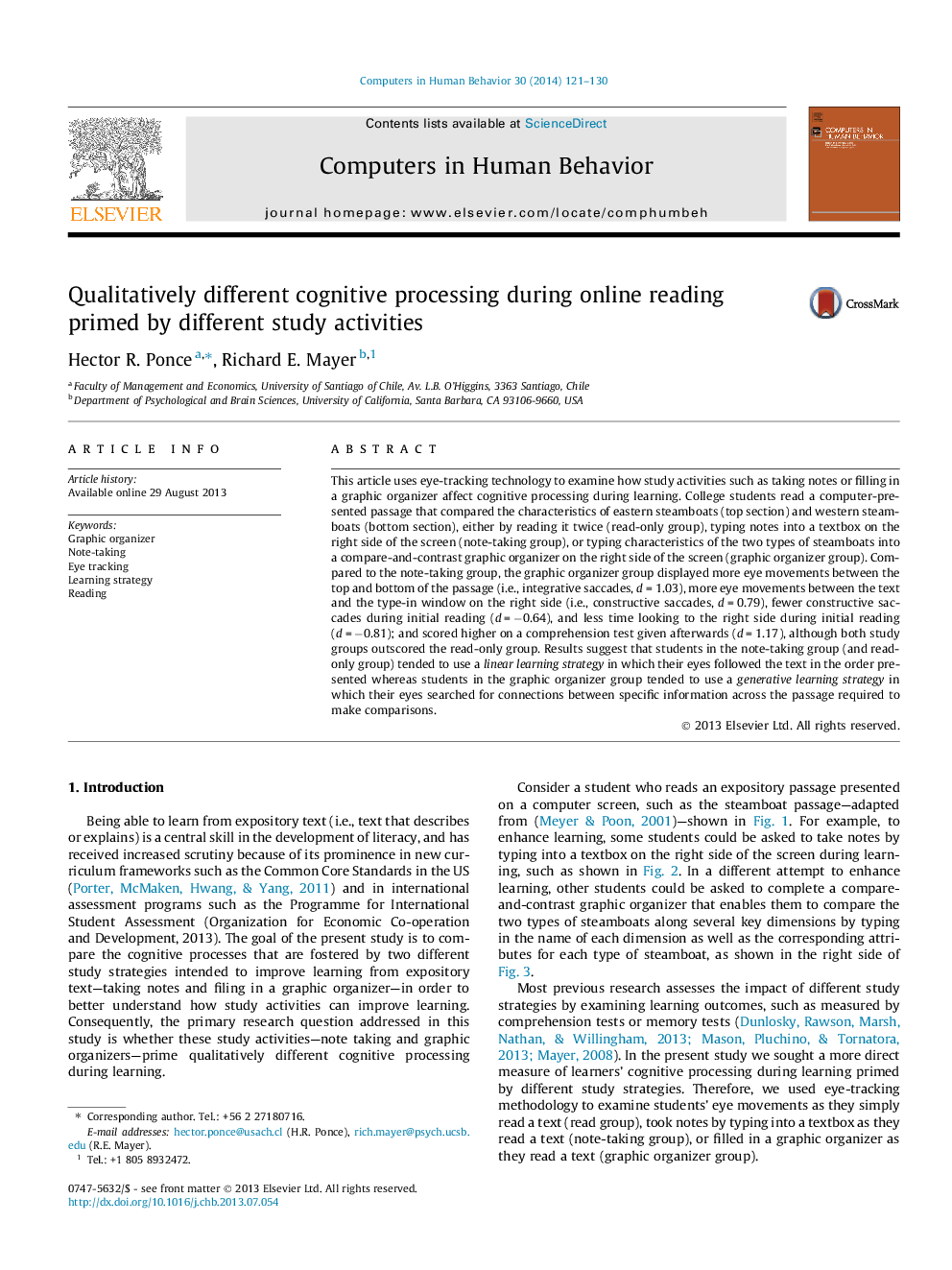| Article ID | Journal | Published Year | Pages | File Type |
|---|---|---|---|---|
| 350660 | Computers in Human Behavior | 2014 | 10 Pages |
•It uses eye-tracking to examine how study activities affect cognitive processing.•It examines cognitive processing in note-taking and graphic organizer.•Eye-movement analysis indicates that note-taking primes a linear learning strategy.•On other hand, graphic organizers prime a generative learning strategy.
This article uses eye-tracking technology to examine how study activities such as taking notes or filling in a graphic organizer affect cognitive processing during learning. College students read a computer-presented passage that compared the characteristics of eastern steamboats (top section) and western steamboats (bottom section), either by reading it twice (read-only group), typing notes into a textbox on the right side of the screen (note-taking group), or typing characteristics of the two types of steamboats into a compare-and-contrast graphic organizer on the right side of the screen (graphic organizer group). Compared to the note-taking group, the graphic organizer group displayed more eye movements between the top and bottom of the passage (i.e., integrative saccades, d = 1.03), more eye movements between the text and the type-in window on the right side (i.e., constructive saccades, d = 0.79), fewer constructive saccades during initial reading (d = −0.64), and less time looking to the right side during initial reading (d = −0.81); and scored higher on a comprehension test given afterwards (d = 1.17), although both study groups outscored the read-only group. Results suggest that students in the note-taking group (and read-only group) tended to use a linear learning strategy in which their eyes followed the text in the order presented whereas students in the graphic organizer group tended to use a generative learning strategy in which their eyes searched for connections between specific information across the passage required to make comparisons.
